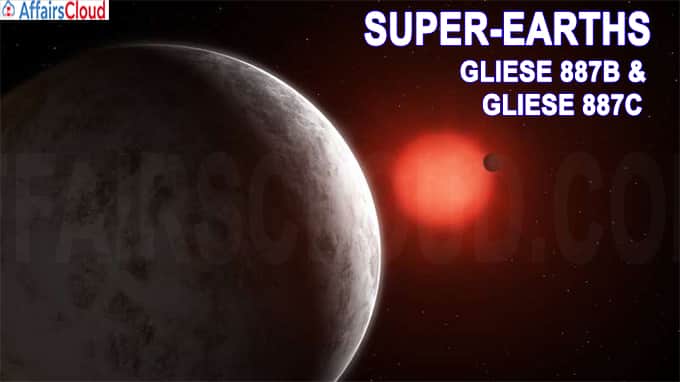 In the research of The RedDots team of Astronomers led by the University of Göttingen (Master – Georg-August-Universität Göttingen), Germany detected two super Earths Gliese 887b and Gliese 887c orbiting around the Gliese 887, the brightest red dwarf star in the sky. The results of the research are published in the journal Science.
In the research of The RedDots team of Astronomers led by the University of Göttingen (Master – Georg-August-Universität Göttingen), Germany detected two super Earths Gliese 887b and Gliese 887c orbiting around the Gliese 887, the brightest red dwarf star in the sky. The results of the research are published in the journal Science.
Note:
Dr Sandra Jeffers,is the lead author of the study from the University of Göttingen.
The RedDots team collaborated with Australian astronomers at UNSW Sydney, Macquarie University and University of Southern Queensland.
Red Dwarf:
Gliese 887, the closest stars to the Sun which is around 11 Light years away from the Sun.
The size of the red dwarf is about half the size of the Sun.
Facts of Gliese 887:
- The Gliese 887 has few starspots, relatively inactive than the Sun, which implies that the discovered planets could be expected to retain their atmospheres.
- The brightness of the star is constant, which helps to detect the atmospheres of the super earths using the James Webb Space Telescope, which is yet to be launched.
The Research:
The RedDots team monitored the red dwarf at the European Southern Observatory, Chile using the HARPS Spectrograph.
The team combined the data with the data from Anglo-Australian Planet Search (using the 3.9m Anglo-Australian Telescope), the Planet finder Spectrograph (on Cerro Las Campanas in Chile) and the HIRES instrument on the Keck telescopes on Maunakea, Hawaii.
Doppler Wobble:
Doppler Wobble is the technique used by the RedDots team, to measure the minute back and forth wobble (unsteady movements) of the star due to the gravitational pull of the planets.
The regular signals corresponding to the orbital period of 9.3 days and 21.8 days indicates the presence of two super Earths.
Findings of the research:
The discovered super earths are enormous than the Earth but substantially lesser than Uranus and Neptune.
The super earths are in the habitable zone of the red dwarf which could be a rocky world with water in liquid form.
The estimated temperature of the Gliese 887c is around 70 degree Celsius.
These planets provide best possibilities in the studies including the search of life outside the solar system.
About University of Göttingen:
President- Reinhard Jahn
Location– Germany




